Recently I took part in a mastermind meeting with several senior marketers and executives of medium to large brands.
While there were lots of brilliant marketing lessons and conversations, the key takeaway was that we all face the challenge of how to gain a deeper understanding into our audiences.
That’s why today I am sharing my Insight Development Framework, something I learned from a former mentor, GP Carlo, and have applied throughout my 15 years in marketing.
You won’t find this in a textbook, but I hope it helps you and your team.
In today’s post I am going to share:
- What is an insight anyway?
- Why are insights important?
- 4 methods to develop insights from data and information
- Classic examples of insights being leveraged in marketing campaigns
- How to leverage insights with a Belief Map
Let’s get started …
What is an insight anyway?
An insight is a deep understanding of customer behaviour, attitudes, emotions or beliefs as it pertains to your brand, and that resonates with your target customer.
Too often we mistake a piece of data or a statistic as an insight.
The fact is that the customer cannot hand you an insight.
As marketers it is our job to take the facts, build an understanding, link it to our brands and develop the insight methodically through a four-step process, with data and information merely the starting point:

Step 1: Data and information: Information about customer behaviour and attitudes.
Ask why to develop …
Step 2: Understanding: A deep understanding of what motivates or limits our customers.
Ask why to develop …
Step 3: Insight: An insight is distinctive to your brand and is expressed as a simple sentence that your customers might say. An insight checks off the following 4 Rs:
- Real – developed from an understanding of customer behaviour, attitudes, emotions or beliefs
- Relevant – relevant to your brand
- Resonates – rings a bell with your customer
- Results – if leveraged is powerful enough to change behaviour
Ask why to develop …
Step 4: Killer Insight: A deep insight that underpins a brand’s positioning.
Why are insights important?
The reason is beautifully explained in this quote:
“You never really understand a person until you consider things from his point of view…until you climb into his skin and walk around in it”
Harper Lee, “To kill a Mockingbird”
It goes without saying, that as a marketer, the deeper our understanding of the audience, the more likely we are going to be successful in delivering effective campaigns.
There are two core types of insights, different in their depth and role in strategy:
- Killer Insight – a deep insight that underpins a brand’s positioning, endures over timing and is central to the overall strategy
- Executional Insight – impacts on different elements of brand execution and can be leveraged across the marketing mix.
Deep insights can drive everything in your marketing strategies and campaigns and can be used to:
- Develop new products or new features for existing products
- Determine decisions and strategies around packaging, place and promotion
- Develop brand positioning, brand essence and brand personality
- Develop your brand or campaign’s proposition
Bill Bernbach, listed by Advertising Age as Advertising’s most influential person of the 20th Century, said, “It may well be that creativity is the last unfair advantage we’re legally allowed to take over our competitors.”
Creativity is driven by insight. So insight is the key to gaining competitive advantage.
4 methods to develop insights from data and information
If you agree that insights are crucial for successful brands, and that it is our job as marketers is to develop insights from the data available, then the next logical question is “How?”
There are four methods that will enable you to take data and information and transform it into killer and executional insights:
Method 1: Clustering
The clustering technique (see image below) starts by gathering all important data and information in their raw form and clustering them together into groups that are alike.
The simplest way to do this is write all individual data points on post-it notes and cluster them.
The next step is to study the clusters and form a simple one sentence understanding that explains customer behaviour, attitudes, emotions or beliefs.
Next, go deeper.
Ask why…
Ask how is this relevant to my brand…
Ask if it resonates with your customers…
Ask yourself if you could leverage this insight to influence behaviour.
Next, you are ready to write your insight.
There are no right or wrong ways of writing an insight but try to keep to one sentence, write it as a statement a customer would say starting with “I …”
Insights are usually more powerful when expressed as the problem rather than the solution.
Here’s an example of clustering for a Pet food brand.

This has been leveraged in different ways by competitor cat food brands.
For example, Felix portrayed the pet cat as a lovable, cheeky child:
While Sheba portrayed the cat as a soul mate:
Method 2: Listening
Putting it simply…
… Listen to your customers, salespeople, customer services, industry experts, influencers and competitors.
Listen to what they say.
Study their product reviews, even book reviews on Amazon.
Study their content, comments, social media posts and groups or forums.
Listen out for:
- Strongly held views
- Big surprises
- Contradictions
- Deep thoughts and emotions
- Frequently used words or phrases
- Words and phrases uniquely applied to the issue or product
Method 3: Barriers
Uncover and study the barriers that are limiting the behaviour your brand needs. For example:
- Past experiences
- Awareness level
- Brand perception
- Cost
The classic example of this is when Skoda embraced the barrier that people thought the brand was a joke. The insight being, “I’d feel embarrassed buying a Skoda.”
Through resulting Skoda campaign repositioned the issue from the brand being the joke, to the joke being the joke:
Method 4: Insightful Questions
Through research, focus groups or one to one conversation ask your customers insightful questions to uncover their attitudes, beliefs and barriers.
Some examples include:
- How do you feel about …
- How do you manage …
- What makes you say that?
- What’s the most important thing you need in a …
Classic examples of insights being leveraged in marketing campaigns
1. Listernine “Dynamite against plaque”
Insight: “The powerful medicinal taste tells me it’s working”.
2. Febreze “Breathe Happy”
Febreze, facing strengthening competition strengthened its elimination of odour point of difference based on the Insight, “A messy home can still be clean. But a smelly home can never be clean”.
3. Snickers “You’re not you when you’re hungry”
Insight: “I don’t feel at my best when I am hungry” & “A Snickers staves off my hunger”.
How to leverage insights with a Belief Map
Once you have developed your insight it is time to exploit it and embed it within a creative brief for your brand communications.
To do this we recommend creating a Belief Map.
When it comes to advertising, it’s all about shifting the belief of your audience…
- Belief leads to behaviour.
- Belief creates customers.
- Belief builds the brands.
Developing your belief shift is an art and a science that combine to become to the most powerful creative briefs.
There is a 7-step process. It’s called Belief Mapping [Click here to download the Belief Map Worksheet]
Step 1: Identify the target audience.
Who exactly is the target audience? This question demands thinking deeper than simple demographics.
Step 2: Identify the target audience’s level of awareness.
Depending on your offering and your target audience, there are various levels of awareness, which determine the behaviours and beliefs you are targeting. These awareness levels are:
- Most unaware: the audience is unaware they even have a problem
- Problem aware: the audience believes they have a problem but is not aware of the solutions
- Solution aware: the audience believes in a certain solution to their problem but is not convinced of your solution
- Our solution aware: the audience believes your solution is the best/ quickest/ easiest option
- Most aware: the audience believes your solution is the best / quickest / easiest option and that yours is the best ‘deal’
Step 3: Identify the current behaviour.
What is the behaviour you are trying to change in regard to your target audience?
Step 4: Identify the current belief that drives that behaviour and what life events have led to those beliefs.
Why do they behave (or not) in this way? What is the primary belief that drives this behaviour? What common events have happened in their lives that have led to these belief systems.
Step 5: Identify the desired behaviour.
What do you want the audience to do?
Step 6: Identify the desired belief that will drive this behaviour.
What is the one big thing they need to believe to do this?
Step 7: Identify the epiphany and stories to create the cognitive dissonance – a belief shift.
This is where the magic happens! What story can you tell to lead the audience to the epiphany and the new belief?
If the belief shift is a big leap, there may be a need to guide people through the shift one step at a time. We achieve this by developing a sequence of smaller shifts either over time or by designing a sequential customer journey.
Your turn?
If you’re trying to get a deeper understanding of your audience start with the Clustering method to gather and group different data and information and work them through to insights.
Need help? Contact Paul by email at paul.james@ardmore.co.uk to arrange a coffee or call.





